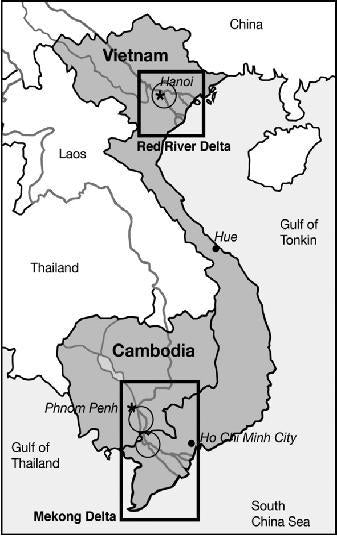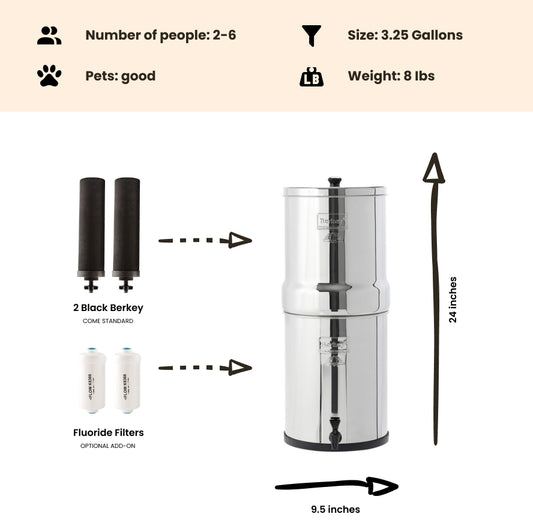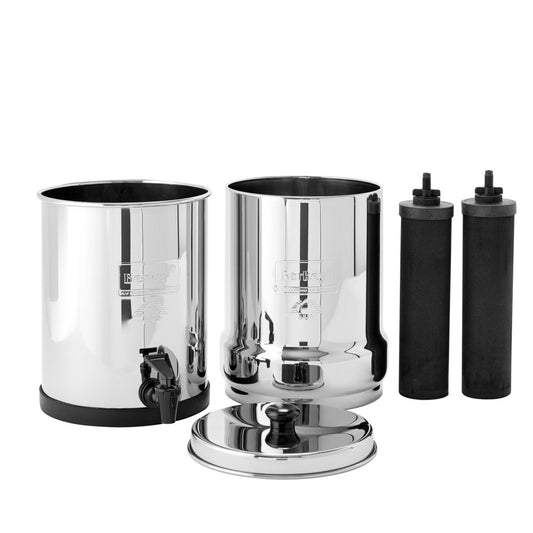
Arsenic Found in Vietnam and Cambodian Rivers
By Thristy_BerkeyShare
While my main focus at BigBerkeyWaterFilters is reporting on water conditions in the United States, I also look for big impact stories that seem to miss the US news networks entirely. Many of these water stories are low on the totem pole in the eyes of the US media and simply do not make print or the airwaves, however these international accounts are invaluable for making us aware of water conditions around the world. How these countries are coping and adjusting to these conditions is a helpful lesson for us, allowing for the perspective we need to make the suitable changes in how we treat and respect our water here at home.
A public announcement, spurred on by a joint effort between UNICEF and the health organizations of two governments recently stated that the Mekong River, which runs through Cambodia and Vietnam, is contaminated with arsenic at a harmful level. More than 21% of the Vietnamese population is at risk, exposed to higher than the EPA and the WHO (World Heath Organization) maximum acceptable levels of arsenic at 10 ppb (parts per billion). When asked about the source of contamination, the chief of UNICEF’s water safety branch stated that “Arsenic contamination in the Mekong is understood to have been caused by recent sedimentation”, and that “it is not known if this has been caused by other reasons as well such as industrial pollution since there has been no scientific study or evidence to support that.” In some regions along the Mekong River, the arsenic levels were found to be above 300 ppb causing the Vietnamese health ministry to warn residents that contamination at these extreme levels have the ability to result in cancer within 3-4 years.

Arsenic Contaminated Areas in Mekong and Red Rivers
Earlier Studies Support Findings While these findings were made public recently over the last couple weeks, there have been numerous studies of both the Mekong River and the Red River highlighting these surfacing dangers. One of the more prominent research papers was performed by a group of university and environmental group scientists published September 2006 titled "Magnitude of arsenic pollution in the Mekong and Red River Deltas — Cambodia and Vietnam". In that paper, researchers concluded that arsenic contamination was prevalent with chronic poisoning of 10 million people in the red river delta region and .5-1 million people in the Mekong river region. Similar to the UNICEF and government findings, these scientists believed that this arsenic was of natural origin and caused by reductive dissolution of arsenic bearing iron buried in aquifers. Hair samples of citizens within these regions confirmed these higher arsenic concentration accumulations. A potential source of this new found health hazard point to the population’s growing reliance on ground wells set in the 12-45M depth range where seepage is occurring at a high rate. This sort of arsenic contamination of wells occurs in some regions of the US also but tends to localized. Unfortunately, the danger is not isolated to wells in Cambodia and Vietnam as the bottled water, fish, and rice farms of both countries were found to be affected. Many residents of the two countries have been aware or suspected of the arsenic contamination prior to these official statements and have been abandoning wells and searching for alternate water sources for a number of years. The Vietnamese government and UNICEF have provided personal water filters to rural home residents, but the amount of individuals that remain unprotected is not clear. Cambodia has chosen to paint contaminated water wells red as part of their action plan. As to information concerning long term arsenic filtration and removal; the proposals and strategy are not well known and hard to determine. This is of great concern to the primarily poor residents affected by this problem since contamination is likely to continue or increase according to research that’s been conducted.
-
Regular price $234.00 USDRegular priceUnit price / per
-
Regular price $327.00 USDRegular priceUnit price / per
-
Regular price From $367.00 USDRegular priceUnit price / per
-
Regular price From $408.00 USDRegular priceUnit price / per
-
Regular price From $451.00 USDRegular priceUnit price / per
-
Regular price From $478.00 USDRegular priceUnit price / per
-
Regular price $332.50 USDRegular priceUnit price / per
$350.00 USDSale price $332.50 USDSale
















Arsenic is a metalloid that can be adsorbed by either alumina or iron based sorbents. The PF-2/4 is an alumina based sorbent. Interestingly enough, this filtration method results in ABSR's(Arsenic Bearing Solid Residuals), which in this case would be your pf-2 or pf-4 filter once your finished. The U.S. Environmental Protection Agency (EPA), and various other gov't agencies participate in programs to help properly dispose of ABSR's that are the byproduct of municipal water systems removing arsenic from their groundwater source. As a follow-up, I'll need to verify that the PF-2/4 alumina media binds to the arsenic tightly enough so as not to allow for a re-leeching once it hits a landfill.
Is filtering out arsenic (rather than distillation or RO) even possible? It's not a dissolved solid like salt, that can't be removed by filters?